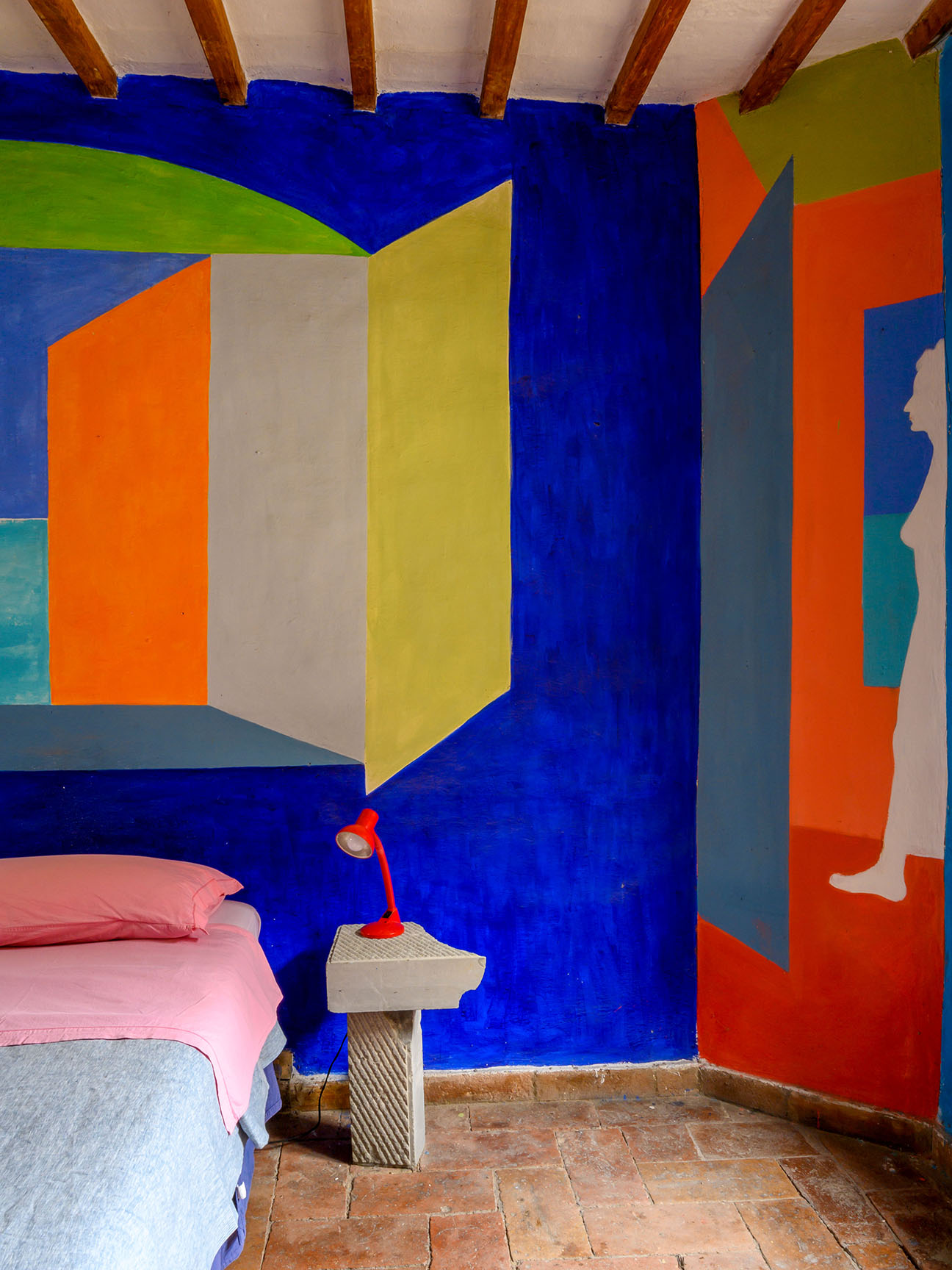We may earn revenue from the products available on this page and participate in affiliate programs.
Light spills in where there is no window; a door floats midair and invites you into another dimension. The effect of encountering Brian O’Doherty’s immersive, reality-bending paintings at his summer home, Casa Dipinta (“Painted House”), is like entering an Alice in Wonderland–style portal, where life on the other side unfolds in kaleidoscopic lime green, brilliant blue, lavender, and marigold. Of course, the artist himself is an ever-evolving enigma.


Although he trained as a doctor, O’Doherty landed in Manhattan to work as an art critic for The New York Times and Art in America in the 1960s and ’70s. During that time he commissioned seminal essays by Susan Sontag and Roland Barthes, struck up a friendship with Marcel Duchamp, made his own art, and became one of the first performance artists back in his native Ireland.


In 1975 O’Doherty and his wife, art historian Barbara Novak, started spending summers in the hilltop town of Todi, an artist enclave in Italy’s lush Umbrian countryside. Their 18th-century home, tucked away from the main piazza down a quiet cobblestone street, offered a retreat from the clipped pace of life in New York. For the first few years, the white walls remained blank, but O’Doherty couldn’t resist for long.


First, he dabbed a patchwork of pastel dots in a grid that covers an entire wall in the bedroom. Soon the dining room glowed with blues, oranges, and yellows so radiant they appeared to light up the thick stone walls from within. When Novak lamented that they didn’t have views of the sun-kissed landscape, he painted four trompe l’oeil windows to reflect different moments of the day, from palest dawn to inky dusk.


Nothing seems too outlandish, though, when the walls can, in fact, talk. Working in Ogham, a Celtic script dating back to the 4th century A.D. that translated 20 letters of the Roman alphabet into vertical or slanted strokes, O’Doherty transcribed layers of meaning into his color-blocked compositions. “I was reviving a code that had been mute for over a millennium…and seemed eerily contemporary,” he said of the language’s graphic quality, in a Frieze Talks lecture in 2012. Grouped by four sets of five and organized similarly to serial music, the system distills words into crisp, melodic lines (or “syllabic tongues,” according to the artist). In the living room, primary-hued stripes spell out Now, while the painting above the corridor to the kitchen means Here—secret coordinates planting you firmly in the present with the simplest of mantras. “Drawing, for me, is always connected to the voice, to sound,” he noted at Frieze. O’Doherty often placed vowels within neat grids and squares, intending the work to be spoken, or even sung, essentially infusing the paintings with breath.


Fascinated with the idea of how a space can be framed and shaped, the artist was equally interested in what cannot be contained. What lives outside the box of logic and reason? His rope “drawings”—string installations stretching elegantly from ceiling to walls to floor—create floating geometries that make you rethink the limits of a room. One fixed perspective doesn’t give you the whole picture. (His groundbreaking 1976 essay, “Inside the White Cube,” questioned the neutrality of gallery white spaces and how we experience art within them.) Another source of endless possibility: the grid—specifically the 5-by-5 “magic square,” in which every column, row, and diagonal add up to the same number.


Casa Dipinta continues to be a living, breathing work in progress. The home is now open to the public when O’Doherty and Novak aren’t there, offering guided tours and a soon-to-launch on-site library that will be stocked with the couple’s extensive book collection on contemporary art. And at age 92, O’Doherty still has plans for new works. Recently he returned to the same area of the house where he started more than 40 years ago, this time tracing a rainbow that frames the entrance to the primary bedroom—and that magical Umbrian view within. To take a tour of Casa Dipinta, visit Todiguide.


The Goods
Statement paint shades to channel Casa Dipinta’s chromatic vernacular.
This story was originally published in our Summer 2020 issue with the headline “In Living Color.”
